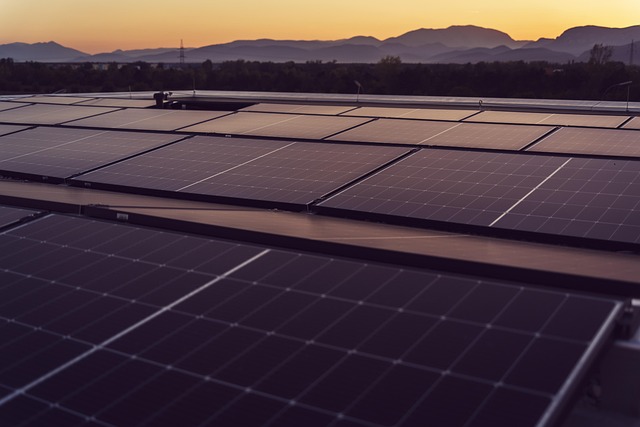Powering Tomorrow: The Rise of Solar Energy in Urban Development
As the world grapples with the pressing issues of climate change and energy sustainability, urban development is at a significant crossroads. Cities are rapidly developing with sprawling infrastructure that puts immense pressure on natural resources and ecosystems. In this landscape, solar energy emerges as a beacon of hope, poised to transform urban environments into sustainable and renewable energy hubs. This article delves into the rise of solar energy in urban development, exploring its benefits, challenges, and future prospects.
The Urgency of Solar Energy Adoption
The urgency of adopting solar energy cannot be understated. According to the Intergovernmental Panel on Climate Change (IPCC), transitioning to renewable energy sources is essential to limit global warming to 1.5 degrees Celsius. Cities, as the primary contributors to carbon emissions, are critical players in this transition. Solar energy offers a pathway to not only reduce reliance on fossil fuels but also to foster economic growth, create jobs, and enhance energy security.
Enhancing Urban Sustainability
Solar energy serves as a fundamental pillar in realizing sustainable urban development. Integrating solar technology into urban infrastructure allows cities to harness renewable resources efficiently. The use of solar panels on rooftops, building-integrated photovoltaics (BIPV), and solar farms in vacant urban spaces can significantly decrease reliance on non-renewable energy sources.
Moreover, solar energy contributes to reducing greenhouse gas emissions, improving air quality, and consequently enhancing public health. By reducing pollutant levels, cities can create healthier environments for their inhabitants. Enhanced air quality translates to fewer health issues, thereby reducing the burden on healthcare systems and promoting a better quality of life.
Technological Advancements Improving Solar Energy
Recent advancements in solar technology have played a crucial role in making solar energy more viable for urban settings. Innovations such as transparent solar panels, solar shingles, and advanced energy storage solutions are increasingly becoming part of modern architectural designs. These advancements allow for seamless integration of solar energy systems into existing urban fabric.
The development of high-efficiency solar cells and large-scale energy storage has significantly increased the efficiency of solar energy utilization. Technologies like smart grids enable cities to manage energy distribution more effectively, allowing for excess power generated during peak sunlight hours to be stored and used during periods of high demand.
Economic Considerations and Job Creation
The economic implications of integrating solar energy into urban development are profound. The solar sector is emerging as a robust source of employment. According to industry reports, solar energy jobs have been growing at a rate significantly higher than the national average in many countries. From manufacturing to installation and maintenance, the solar energy revolution is generating diverse employment opportunities, fueling local economies.
Moreover, investing in solar infrastructure can lead to substantial long-term savings. Cities adopting solar energy can reduce their energy bills, lower operational costs for public services, and disappear fluctuations associated with fossil fuel markets. This financial stability can enable reinvestment into other community projects, leading to improved infrastructure and services.
Challenges Facing Urban Solar Adoption
Despite the myriad benefits, the rise of solar energy in urban development comes with its own set of challenges. One of the primary barriers is the initial capital cost associated with solar installations. Although prices have steadily declined over the years, the upfront investment remains significant, particularly for low-income communities where energy poverty persists.
Another hurdle is the issue of space. Urban areas often struggle with limited roof space and zoning constraints that can impede solar installations. Additionally, the existing grid infrastructure may require upgrades to accommodate increased solar input, necessitating additional investment and planning.
There are also regulatory challenges to consider. Inconsistent policies and incentives for solar adoption across different regions can complicate investment decisions. Governments must work towards creating a supportive policy environment that facilitates solar integration into urban planning.
The Role of Community Engagement
A crucial element driving solar energy success in urban environments is community engagement. Awareness campaigns and educational initiatives can inspire local populations to embrace solar technologies. Programs aimed at educating residents about the benefits of solar energy, alongside community solar projects, can effectively democratize access to renewable energy.
Furthermore, involving local communities in decision-making processes related to solar infrastructure can foster greater acceptance and ownership of projects. Encouraging public participation in planning and execution not only cultivates a sense of community but also ensures that projects meet local needs and expectations.
The Future of Solar Energy in Urban Development
Looking to the future, the synergy between solar energy and urban development is expected to deepen. As cities increasingly prioritize sustainability, integrating renewable energy sources into planning initiatives will become essential. The global shift towards carbon neutrality and net-zero buildings will drive demand for solar energy solutions.
Innovative models such as “solar cities” and “smart cities” are poised to redefine urban living. These concepts involve creating interconnected networks where solar energy is produced, stored, and consumed sustainably. Urban planners will need to embrace interdisciplinary approaches, collaborating with architects, engineers, and policymakers to design integrated energy solutions that harness the power of the sun.
Conclusion
The rise of solar energy in urban development represents a transformative opportunity for cities to become more sustainable, resilient, and economically vibrant. By leveraging the power of solar energy, urban areas can enhance energy independence, reduce greenhouse gas emissions, and create job opportunities while providing healthier living conditions for their residents.
The pathway to achieving a solar-powered urban future lies in overcoming existing challenges through technological innovation, community involvement, and supportive policy frameworks. As cities continue to evolve, staying at the forefront of solar energy adoption will be instrumental in powering tomorrow’s urban landscape.
Call to Action
As citizens, community leaders, and policymakers, the time to act is now. By advocating for solar energy initiatives, supporting local projects, and participating in community discussions, we can each contribute to a sustainable urban future powered by renewable energy. Together, we can harness the sun’s potential and create cities that thrive for generations to come.
